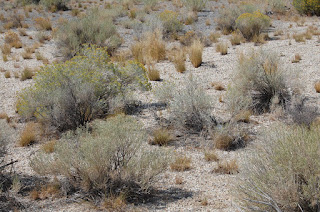Joe B Chiles and the rest of the party reveled in the warmth of foothills with their lower elevations. Overnight
they had gone from eating wolf guts to roasting antelope steaks, and
from hopeless desperation in the cold trackless mountains to an
optimistic feeling that their journey was almost at an end. Cheyenne Dawson,
who had been almost forced to his knees from thirst and hunger,
rejoiced with the others. “…and we decided to tarry, kill and
eat…Bidwell says there were 13 deer killed and eaten, [by 32 people] and as we
remained there only two or three days, there must have been some tall
eating.” Vegetarians, look away now.
The
first night in the valley of the Stanislaus River they gorged on as
much deer and antelope as they could, overcome to the point of tears with relief and delight as they ate
their fill. Wild grapes still hung on their vines, sweet and
thirst-quenching. After almost seven months on the trail, the first
party of American settlers to cross the continent was in sight of
their goal.
The
next day the Bartleson group remained in camp to dress the meat that
they had killed the day before while the rest of the party set off
down the river. As they followed the watercourse they were startled
by the sudden appearance of Thomas Jones, one of the hunters who had
been gone for just over a week. He explained that he had descended
from the mountains looking for game a few days before the main party
and by the greatest stroke of good fortune had run into an Indian
whose one word of English was, ‘Marsh,Marsh’.
 |
| John Marsh, dressed up for the photographer |
The Indian had
indeed been sent out by John Marsh, who had heard that a party of
fellow Missourians was struggling through the mountains, to give them
supplies and guide them across the San Joaquin all the way to his
rancho on the slopes of Mt. Diablo. A most welcome item was farina
meal for Nancy Kelsey, who a few days before had become too weak to
travel on until her husband shot a deer and brought her some meat to
revive her.
They
waited for Bartleson and his men to catch up and then all proceeded
together to Marsh’s rancho, crossing the San Joaquin River whose
width they estimated at about 100 yards. The promised land of the San
Joaquin looked like anything but a paradise to the new arrivals. The
drought had left the land depressingly parched and sere, but Marsh
cheered them up with a feast of a fat hog accompanied by some of his
California brandy. Their welcome was warm, as he happily showed off
his surroundings and family, consisting of his wife from one of the
local tribes, and several children, who slept most nights out of
doors unless it was raining, in which case they unrolled some skins
on the dirt floor and slept inside.
Afterwards,
some of the travelers took up Marsh’s offer to sleep under a roof
after so many months under the stars. Dawson and some of the others
tried this novelty, but found that between the fleas and the rushing
for the outhouse by their companions whose digestion could not cope
with the fat pork that they had eaten so eagerly, they hardly slept.
| Cheyenne Dawson, with a small animal stuck to his chin.. Donald Trump, take note |
For Chiles, Hopper, Dawson and Bartleson, two days
with Marsh was enough. They wanted to get on and see the territory. So it was off to the nearby pueblo San Jose
| Joe B, with his new wife Margaret, probably 1853 |
for passports, by way of a night in jail over a little misunderstanding as to how they had arrived in California. But once that had been cleared up, and with the payment of $5, they were visitors in good standing and off to Monterey, the provincial capital, to see the lay of the land. More exploring followed, and on a visit to former Missouri neighbor in Napa County, George Yount, Chiles saw the valley that would excite his imagination and industry. He also called on Gen. Mariano Vallejo military governor, who wholeheartedly supported his plan to establish a mill in the region. It was the start of the adventure that would last the rest of his life.
[The majority of the text above is taken from the MS of my next writing project--The Life and Times of Joe B Chiles.]
| Chiles ' house where he ended his days - St. Helena |
| Chiles' adobe house, Chiles Valley |
Speaking of adventures, here are some statistics from our trans-continental junket:
Miles -- approximately 3010 miles
States visited -- 8 -- Missouri, Kansas, Nebraska, Wyoming, Colorado, Idaho, Utah, Nevada, California
Number of cups of coffee served in something other than styrofoam -- 5
Discouraging words -- few
Tanks of gas -- approx. 14
Number of motels stayed in -- 12
Number of motels stayed in -- 12
Memorable meals -- few
Memorable meals for the wrong reasons -- too many
Good company -- much





























